Finding Their Fit
The newsroom wasn’t always Doug Toney’s home.
When he was a freshman at Ball State in 1969, Toney was on track to become a history teacher. Born and raised on the farm, he said it made sense to have summers off and help his family out on the property.
But, after one mass communications class with George Harper, former professor of journalism, Toney was “hooked.”
“I was fascinated with him and with the subject matter,” he said. “George saw the naïve, country boy in me, and he really encouraged me … to explore journalism.”
Toney eventually became a general assignment reporter for The Daily News, and a “sequence of jobs” led him to the managing editor’s chair. When he held that position, Toney said, he learned the pressure, thrill and excitement of reporting.
“After that, everything was toward journalism,” Toney said. “I loved history. I loved politics, and so that’s what I was going to do, but boy, when I got on The Daily News, it turned all of that on its head.”
Joan Neumann, 1973 journalism alumna, said she made a similar self-discovery in the newsroom. Like Toney, she started as a teaching major and later switched to being a departmental major. With the help of Ken Atwell, former professor of journalism, she found herself behind The Daily News’ copy desk.
One summer, Neumann took over as one of The Daily News’ first female sports editors, giving her the opportunity to cover the Pan-American men’s volleyball team training at Ball State with former volleyball coach Don Shondell.
“That was pretty cool,” Neumann said. “I love volleyball. Of course, I grew up at a time where we didn’t have it, except as a club sport. But to go watch all those guys practicing, it was pretty cool.”
Amy Brines found her way to the newsroom with the help of a magician. During her sophomore year, Brines had a friend who worked as a magician’s assistant. She had a show coming up, so she asked Brines to help with public relations and promotion, Brines said.
“At that point, I wasn’t involved in any student media organizations,” Brines said, “but I thought [the show] might be a fun pitch; maybe this would be my way in.”
By the spring of her junior year, Brines worked as a chief reporter, or senior reporter of the news section, covering beats like Student Government Association (SGA) and the environment. When she graduated with a magazine journalism degree in 1993, Brines had held the titles of co-news editor, lifestyles editor and managing editor of The Daily News.
Unlike the others, Greg Weaver, 1983 journalism and political science graduate, said he knew the newsroom was his home when he was 12 years old. After the Watergate scandal, Woodward and Bernstein became Weaver’s heroes, and he never questioned what he wanted to do again.
“I spent the summer between my sixth and seventh grade year watching the Watergate hearings and reading ‘All the President's Men,’” Weaver said. “That's what sealed the deal for me. I knew that's what I wanted to do.”
Weaver was also managing editor of The Daily News while at Ball State, and the newsroom was a learning opportunity he said he felt the need to take advantage of before entering the field.
“It seemed like the best place to get practical experience before you went out and tried to do it professionally,” Weaver said. “My experiences at The Daily News were foundational in many of the things that I continue to do today, especially as it relates to covering or editing political stories at the local, state or federal level.”
The newsroom wasn’t always home, but it became where they all wanted to be.
Waiting on Watergate
For decades, The Daily News ran out of small houses behind the L.A. Pittenger Student Center. When Toney was on the staff, he said, the department was “in great transition,” and the newsroom he and the rest of the staff worked out of wasn’t at all what one would expect.
“The copy desk was in what had been the living room of a small house,” Toney said. “There were typical wire machines in there, and, before computers, wire machines created this wonderful percussion in the newsroom — a constant drumbeat — and it was a wonderful background noise for us.”
Toney spent most of his days listening to the continuous percussion, but there were times in which it stopped, and instead of a drumbeat, he listened for a bell.
“There was a mechanism in which a bell rang to give notice to the copy desk that there was a big story,” Toney said. “I don't remember which particular Watergate story it was, but I can remember being in there one evening, and the bell rang three or four times, ‘bing, bing, bing, bing,’ and everybody in the house jumped and ran to the copy machine to see what the story was.”
Looking over one another’s shoulders, the staff of The Daily News waited and watched as the wire machine’s paper began rolling out with the story being typed in front of them.
“Those [times] were extraordinary,” Toney said. “You have to remember news and communication wasn't instant. We were getting it before everyone else as it was being typed in front of us off the wire machines.”
Before he knew it, Toney said, newsrooms transitioned from wire machines and typewriters to computers, and the percussion that once served as background music to his writing fell silent.
“It was so quiet in the newsroom,” he said. “I said, ‘This is nuts. It’s like working in a library, it’s not like working in a newsroom anymore.’”
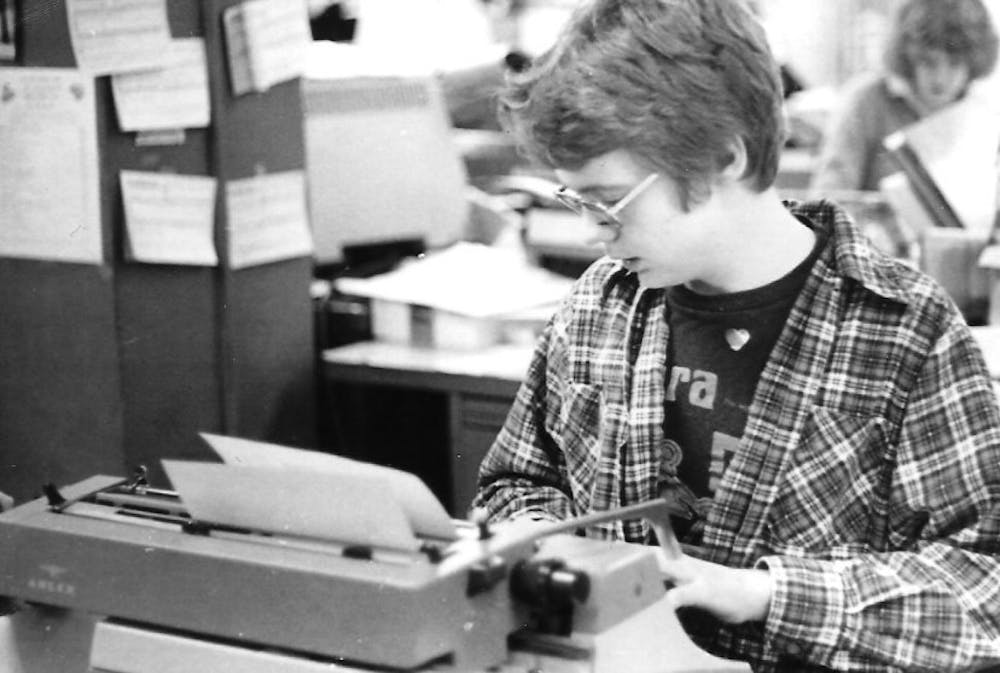
Doug Long writes up a story sitting at a desk in the old Daily News newsroom in 1981. The Daily News' current newsroom was completed in 2014. Dawne Slater, Photo Provided
The Miss and Mr. Nude Indiana Pageant
Near the end of Toney’s time at Ball State, a position opened up in the Department of Journalism. The Daily News needed a new adviser, and Louis E. Ingelhart, then-chair of the department, already had someone in mind.
Ingelhart called David Knott, who previously completed a journalism workshop with the department and a teaching assistantship in 1970, eventually earning his master’s from the school. Knott applied for a job with the department a few years prior and didn’t get it, but when Ingelhart told him about the opening with The Daily News, Knott said he accepted the job immediately.
“Best thing that ever happened to me,” Knott said. “This was post-Watergate, so it was a really exciting time to be in journalism, especially in newspapers. There was a high degree of idealism, and everybody who came in was going to change the world, and it was so much fun, it was so invigorating. I still get choked up thinking about it.”
From 1976-99, Knott helped The Daily News staff through the highs and lows of student media, from reporting the explosion of The Challenger in 1986 to the Miss and Mr. Nude Indiana Pageant, something Toney covered himself.
“They used to have the contest up in Lake County, and the DN always sent somebody up to cover it,” Knott said. “One time, they did a photo page. The only thing I said was, ‘Don’t publish any frontal pictures.’”
When Knott looked at the paper the next day, he said, there was a gallery of “women in high heels showing their buttcheeks, dancing on the stage.” While Knott said he doesn’t remember receiving much backlash, Toney said he remembers “outrage” and Cordell Campbell, chief of the Muncie Police Department at the time, threatened to press criminal charges.
“We were young and crazy and panicked,” Toney said. “Dr. Ingelhart called me into his office, and I thought, ‘Oh, man. This is going to be bad.’ He looked at me, and he said, ‘I’ll make some calls. You better not go to class for the next couple days. They’re going to be looking at your schedule.’”
When Toney returned to campus a few days later, he said everything was fine.
“I don’t know what Dr. Ingelhart did,” Toney said, “but nothing ever happened.”
‘The heart and soul of The Daily News’
It was because of the support The Daily News received from the Department of Journalism, Toney said, that he was able to learn as much as he did in student media.
“It was a small enough department at that point, especially if you worked at The Daily News, that the people on the staff got to know you,” Toney said. “You couldn’t walk around without Dr. Ingelhart, Ken Atwell, Mark Popovich — I could go on — pulling out the paper and handing you a copy of your article marked up with suggestions, and that was so beneficial.”
In fact, Knott started every day in the newsroom the same way — with the day’s edition of The Daily News on his desk and a red pen ready to mark it up.
“Every morning,” Knott said, “the first thing I did when I got to my office was pick up a copy of the paper, and I’d go through and mark up every single story, and we ran anywhere from six to 16 broadsheet pages a day.”
When he got to the newsroom every day, Weaver made his way to where Knott’s critique was posted.
“Everybody would come in and read it, and we would get an honest, unvarnished opinion of how we had done our job,” Weaver said. “That was helpful because you knew that if Dave wrote the words ‘good grief’ above one of your stories, you had an issue that you needed to address and think about.”
There are three things he did, Knott said, that were important in how he advised the staff of The Daily News. In addition to his daily critiques, Knott also made changes to the paper’s publication process. When he began advising in 1976, The Daily News printed on tabloid pages, and one of the first things he did was switch the paper over to a broadsheet format.
“In the 1970s, tabloid format was viewed as gossip. They weren’t taken as seriously as a broadsheet was,” Knott said. “We switched over to a broadsheet, and boy, did that open things up.”
In addition to giving the staff more room to report, Knott said it also opened up advertising “tremendously.”
“Local merchants saw us as legitimate now, and before we were just like a high school paper,” Knott said. “When we went to broadsheet, that meant we were serious business.”
He also bumped the paper up from printing four days a week to five, and three days a week in the summer. The additional papers helped The Daily News financially, Knott said, as it increased advertisement revenue and grew the department’s advertising program, which led more students to the newsroom.
“Usually, we’d have 75-80 people on staff every semester between advertising, news, editorial and production,” Knott said, and each reporter would work on a variety of beats including SGA, faculty senate, Board of Trustees. “They got to know the people, and the people got to know them, and sometimes they liked them, and sometimes they didn’t.”
He was sure to always make clear, though, that The Daily News was the students’ paper, and if they were going to run a story, they better make it effective.
“That was my main mantra,” Knott said. “Be effective in whatever it is you do … I was always willing to talk to them and give them my advice, and if they took it, that's fine. If they didn't, that's fine, too. It was their paper, and we made that very clear. Always. Dr. Ingelhart would never have allowed anything other than that. I sometimes worry about the future in that regard, but there was never a question.”
The third thing he did, and the most important, Knott said, was make himself constantly available to his students. He started every morning in the newsroom, where his office door remained open during the day. He’d return home for a few hours in the late afternoon to spend time with his wife and three children, and then it was back to the newsroom, where he often stayed until midnight.
“The fact that I was available was very important,” Knott said. “At the time, I didn’t think of it in those terms at all; it was just something I wanted to do. I was here all the time — I answered questions, gave advice, was told to go to hell — and it was great. It was wonderful. We built relationships that way.”
When Brines thinks about working with Knott, she said she remembers how often he made her laugh just being around him, but what she appreciates most about him was how welcoming he was of her to the newsroom.
“Just put a big picture of [Knott] on the front of [the paper],” Brines said. “He's just, to me, the heart and soul of The Daily News. Dave was a leader. He was someone you could rely on, and it really was just a big family.”
Policy and Pulitzers
One Saturday morning in late 1982, Don Yaeger, 1984 journalism alumnus, called Knott from Alexander M. Bracken Library.
“I’ve come across something,” he said, “and I want to make sure I understand it.”
Knott left home on his day off to review something Yaeger found in the local paper. Indiana’s financial institutions are required by law to post earnings and debits every few months, Knott said. At the time, Robert P. Bell, Ball State president from 1981-84, was on the board of Merchant’s Bank, and the then-Board of Trustees President held a high-figure role with another. The bank in which the president of the board was involved had declared a “huge loss.”
“Shortly after that, the university put like $6 million of its money in that bank,” Knott said. “So, they basically bailed him out, and it was an obvious and huge conflict of interest.”
The situation led to a Delaware County grand jury investigation and state audit of the university, and The Daily News broke the story during Homecoming Week.
“The place went crazy,” Knott said. “They immediately called a press conference, and Indiana media from all over the state came in for this press conference, and they said nothing illegal happened, it’s just a made up story.”
Weaver was a student on staff when the story broke, and he said reporting stories like this were some of the greatest learning experiences.
“We did some stories while I was there that very much challenged the university administration,” Weaver said. “I learned some valuable lessons in how to defend and explain critical stories that were accurate in a way that was respectful but also firm.”
Three weeks had passed since The Daily News broke the story, and Knott said the time allowed for misinformation to spread like wildfire. He and the staff then decided the best way to clear up the story was to publish the hard facts.
“I told them to publish the numbers and put them in the paper,” Knott said. “When they did, everything changed.”
The day the numbers ran in print, a local attorney called Yaeger, who wrote the story that broke the news for The Daily News, and asked to meet him for breakfast.
“He said, ‘Tomorrow, I’m going to file a suit against the university for their conflict of interest,’” Knott said. “This thing blew open.”
The case made its way to the grand jury. For months, The Daily News sent photographers to stand outside the courts whenever anyone involved in the case testified, and pictures of university figureheads entering the jury room were published in the paper.
“It was horrible, but it was exhilarating,” Knott said. “I am convinced had I not been on tenure, I would have been fired. No question.”
Threats toward The Daily News began pouring in, and at a faculty meeting the first day of the 1983 spring semester in Emens Auditorium, Knott said Ball State’s President Bell “stood up and blasted The Daily News.”
“When he did that, some faculty saw he was getting ready to try to shut us down,” Knott said. “So, they came out and they purchased a huge ad in the paper with all their names signed that said, ‘Keep your hands off The Daily News. Don’t touch ‘em.’”
Despite the backlash, The Daily News continued reporting, and eventually, the Indiana state legislature got involved and changed the state law regarding conflict of interest, Knott said. The newspaper and its staff received favorable press coverage in media outlets like Indianapolis Star for its work, and in 1983, Knott said The Daily News’ coverage of the story was nominated for a Pulitzer Prize.
“There had never been — and I don’t think still, to this day — another college publication that ever got a Pulitzer Prize [nomination],” Knott said.
About a week before prizes were to be announced, Knott said The Daily News started receiving phone calls to the newsroom from newspapers including the Los Angeles Times and The Washington Post asking the staff to leave phone lines open at a specific time.
“Obviously, we thought, ‘Well, we won that thing,’” Knott said.
Mark Popovich was chair of the department at the time, and he, Knott and the rest of The Daily News staff gathered around a teletype and the cake Popovich ordered for the occasion and watched the machine dispense ticker tape, announcing the winners one by one.
“Everybody’s in this little room with this thing going, ‘tick, tick, tick, tick,’” Knott said, “and we were never mentioned. We didn’t get it, and it was such a let down, mainly because we were led to believe we were going to win it.”
For weeks afterwards, Knott said he remembers Ingelhart making phone calls to friends all over the country to figure out what happened and why The Daily News didn’t win.
“Nobody would tell him,” Knott said, “but we finally came to the conclusion that somebody probably heard about [our nomination] and said they didn’t want a college paper to [win a Pulitzer].”
The ticker tape finished dispensing, and the “tick, tick, tick” of the teletype fell silent.

Digitizing The Daily
When Brines was a senior, shortly after she had gotten used to the way The Daily News’ production team physically pasted copy for the paper, The Daily News made a switch to the QuarkXPress digital pagination system, which introduced students to digital reporting.
“It was insane,” Brines said. “No one else was doing it. I think we were one of two or three student newspapers in the country doing this at the time.”
Brines said the process was like “flipping a switch” as The Daily News slowly integrated digital pagination into its print night process. The staff started paginating one page a night until the paper was created entirely from digital pagination.
“There were many hiccups and many late nights,” Brines said, “but, for me, it changed everything as far as what I wanted to do after school. I fell in love with the whole concept and new avenue of digital reporting.”
To print the paper, Brines and the rest of the staff used little, 5-inch Macintosh SE monitors with colored screens. It was the first time she had ever been able to print a single page of The Daily News with one click.
“All we could think was, ‘holy shit,’” Brines said. “It was so cool. I really think that was the beginning of Ball State leading in technology for colleges.”
Because of her experience with The Daily News and digital pagination, Brines said she got her first job out of school with a community newspaper group in Chicago using the same QuarkXPress digital pagination system.
“It spurred my career in that direction because no one else had experience like this, no one else was doing this at the time,” Brines said. “It was a game changer, and it was incredible to be at the forefront of that.”
Home Sweet Home
In addition to becoming the place he spent most of his time, Weaver said the newsroom also became the place he met most of his friends. The Daily News staff became his social circle, and he stays in contact with many of them today.
“Those relationships continue to mean a lot to me,” Weaver said.
After putting the paper to bed every night around midnight, Weaver said he and his friends on the staff would often find themselves at Waffle House or Tony’s Locker Room, an old bar that used to be across the street from Scheumann Stadium.
“Those are experiences that you just can't replicate at a time when you know you're looking for friends and to build relationships,” Weaver said. “Those relationships are lasting my entire life.”
Like Weaver, Toney said he also made friends for life in the newsroom, and he has remained in contact with his friends from The Daily News for more than 50 years.
“It changed my life,” Toney said. “I think it gave everyone a sense of purpose. As idealist as we were in the ‘60s and early ‘70s, we thought we could change the world.”
There was a shared mentality between the students in the newsroom, Brines said. The Daily News ran out of West Quad when she was a student, and, in a way, being set apart from the rest of campus helped Brines find her place.
“You were so far removed from a majority of campus,” Brines said. “You really just kind of felt like you were out on your own, and that was cool because it just was a wild place, and we could kind of do what we wanted.”
After putting the final edition of The Daily News she would ever work on to bed her senior year, Brines and the rest of the editorial board climbed to the roof of the West Quad and hit golf balls off the building and into the quad.
“That was a fun one,” Brines said. “I'm scared of heights, but that was a nice ending note to [my time with The Daily News]. It was so much fun. It was like its own fraternity. You know these people who are in the trenches who no one else can understand. It was my work life, school life, social life … It all revolved around the DN.”
Knott said he could see how important The Daily News was to every student he worked with in the newsroom, and the staff of The Daily News became a family. The best thing about his job, he said, was that it was an informal learning laboratory, which allowed him to develop relationships with students that he couldn’t develop in a classroom.
“I was so lucky to have many good students and really good people — dedicated, hardworking,” Knott said. “They didn’t have much of a life outside of the DN. They're a very close knit group.”
The newsroom wasn’t always their home, but they said they quickly came to learn there was no place quite like it.
On to 100 More
Despite having spent 23 out of The Daily News’ 100 years as its adviser, Knott said it is still hard to wrap his head around how far the paper has come.
“We had a celebration for the 75th year, and it was kind of a big deal, but nothing like this,” Knott said. “This is huge. It's very important, and I'm proud of anything I was able to add to it, but it gave me more than I gave it.”
When Brines reflects on the history of The Daily News, she said she hopes it continues to remain a “lasting legacy.” She is proud of the opportunities the newsroom gave her, and she said she hopes Ball State and the School of Journalism and Strategic Communication continue to remain “one step ahead.”
“I got so much more out of my experience at the DN than my classes, and my classes were great, my instructors were amazing, but the practical experience I got [in the newsroom] is what projected me out into my career,” Brines said.
Similarly, Weaver said a majority of his preparation for entering the workforce came from The Daily News, and he appreciates how flexible the paper was in allowing for room to grow.
“College is a great time to learn from your mistakes, and The Daily News was great preparation,” Weaver said. “It means a lot to me that it’s been able to continue, in some fashion, as newspapers across the country struggle. Just to be able to know that there is still some semblance of it left is very heartwarming for me because The Daily News means a lot to me and my experiences. They mean a great deal.”
Like Weaver, Toney said he is “fascinated and proud” of how well, especially over the last two decades of “enormous change in journalism and communications,” The Daily News has kept up with the media landscape.
“Just being a part of that, I'm just so proud of and so respectful of how well the school has adapted and provided leadership,” Toney said. “[The 100th anniversary] doesn't have anything to do with me other than I'm associated with it as part of my past, but as someone who is part of the history of The Daily News, it's really significant and something I'm very proud of to see how well the School of Journalism has done.”
Contact Taylor Smith with comments at tnsmith6@bsu.edu or on Twitter @taywrites.

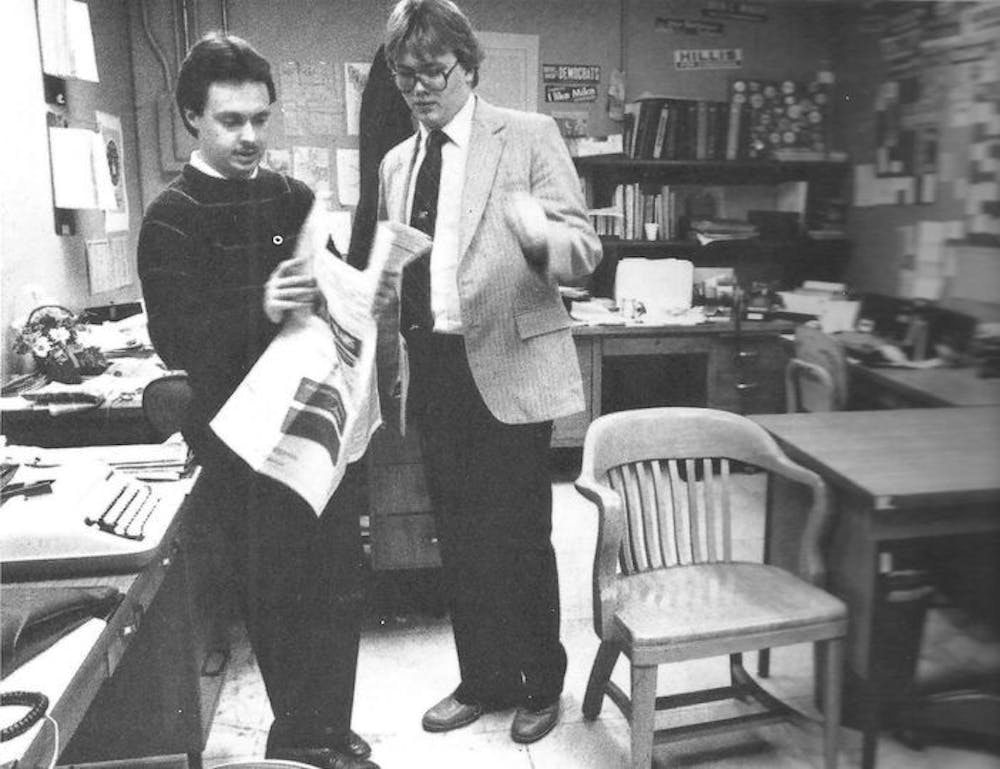
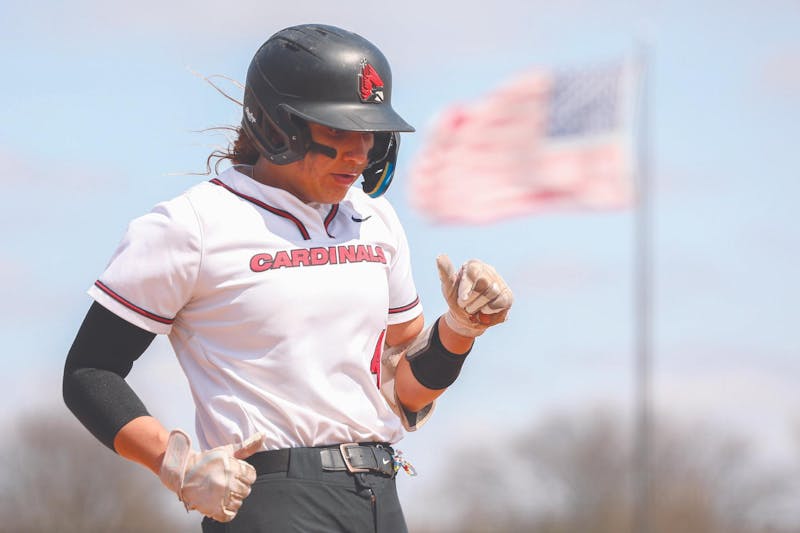
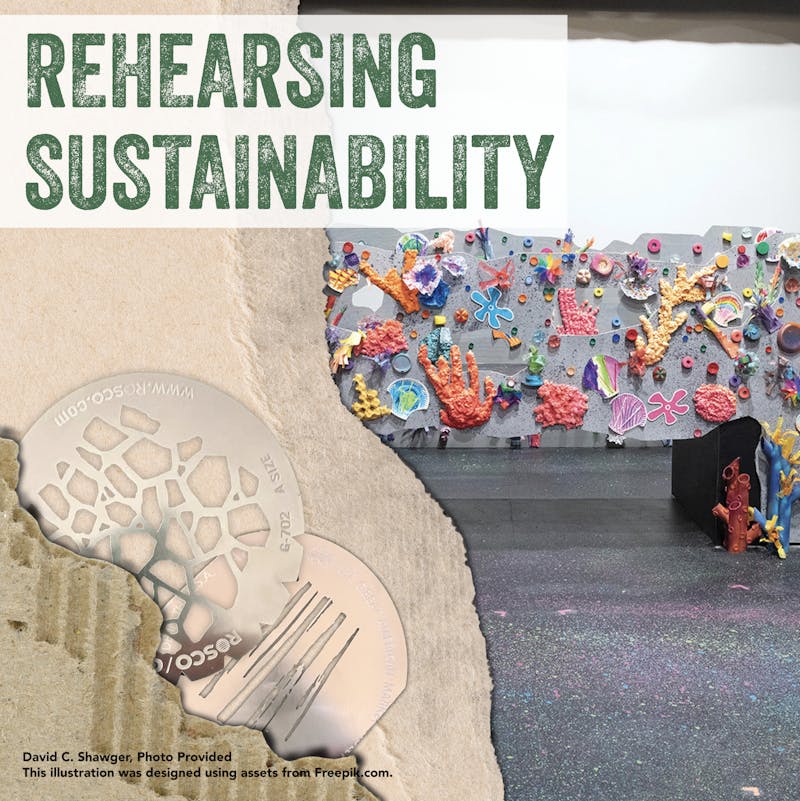
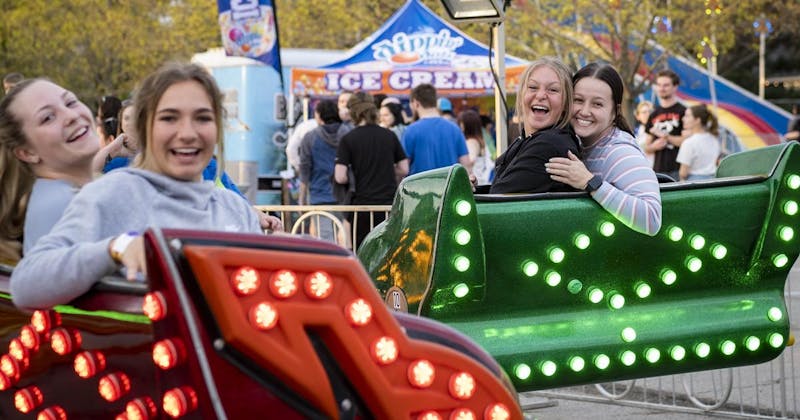
The Daily News welcomes thoughtful discussion on all of our stories, but please keep comments civil and on-topic. Read our full guidelines here.